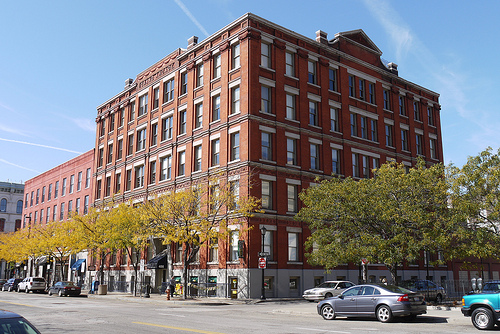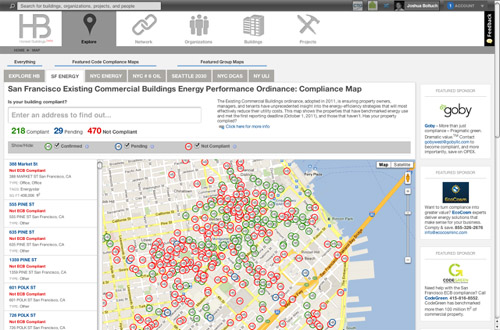The shift to urban transparency just got a promising new resource in Honest Buildings. The real estate network launched just months ago has already released comprehensive data on more than 400,000 commercial and mixed-use buildings across the United States. A recent partnership with the City of San Francisco resulted in the creation of the San Francisco Energy Compliance Map — a first by the group. And the database maps data on over 34,000 properties in the San Francisco Bay Area alone.
Among the data points profiled by Honest Buildings is square footage, building ownership, property management, renovation projects, and more. Honest Buildings also provides a meeting ground for building managers and tenants to connect with various service providers.
Honest Buildings' CEO, Riggs Kubiak, noted, “Aggregating and releasing this building information provides a new level of transparency around buildings that helps everyone make smarter and faster real estate decisions. We are bringing together government, private business, and individuals, connecting the entire commercial real estate market so they can do more business more efficiently. It makes financial sense, and it also makes sense for the environment, as buildings now have to compete with each other to be more energy efficient.”

This commercial building in Cleveland, Ohio, like so many across the U.S. can benefit from becoming an Honest Building. Photo credit: Eli Pousson. Used under Creative Commons license.
The Honest Buildings approach is multi-prong with the sharing of information and the lowering of energy usage as two of the primary goals — both of which play into a building's efficiency of use. Stakeholders benefit in myriad ways, even if their aims are singular, such as to boost business. Ben Cooper, head of sales at San Francisco-based energy efficiency company Building Hero, enthused, “We quickly had all of our projects on the platform to showcase our portfolio of work, and immediately we were making new contacts and sourcing new business. Plus, with a treasure trove of building data we can proactively look for potential customers in our sweet spot.”
One person who readily gets the broad scope of Honest Buildings is Lisa Gansky, author of The Mesh. An investor in the company, Gansky sees the company's potential to bridge the real estate gap between government, business, and communities: “Honest Buildings is brilliantly building a global social network for the built environment — buildings, professionals, local government, and communities all connected. To reduce waste and design sustainable cities, neighborhoods, and economies, the Honest Buildings' network inspires sharing between districts and between cities."
Kubiak was previously the Global Head of Sustainability for Tishman Speyer, so energy efficiency was a natural component of Honest Buildings, which is co-located in the New York City Accelerator for a Clean and Renewable Economy (NYCACRE) incubator and in Seattle. That fact is apparent in Honest Buildings' partnership with San Francisco, and will likely carry over to cities across the nation as the program continues to roll out.

San Francisco aims to host the most transparent energy rating program in the country. To this end, the San Francisco Department of the Environment is putting their Energy Compliance Map in the hands of Honest Buildings. Property owners are incentivized to share their usage data by the fact that all compliant, pending, and non-compliant commercial buildings over 50,000 sq. ft. will be highlighted as such on the map. And if a building's owner needs help with their energy audit, monitoring, or services, Honest Buildings can help with that, too. Eventually, they will find that both their operating expenses and carbon emissions are reduced thanks to the energy efficiency.
As Melanie Nutter, Director of San Francisco’s Department of the Environment, observed,“Transparency is a catalyst for action. Competition among building owners, managers, and tenants to use energy efficiently will benefit their bottom line. Our first step is to share which commercial buildings have shared energy benchmarking data and which have not. The next step is to make energy performance reports public, which will empower the market to make better decisions with more information.”
Sunil Paul of Spring Ventures, tags Honest Buildings as being part of the vanguard of what's to come: “Honest Buildings is streamlining the costly and inefficient process building owners and managers have to find service providers for their next project, and in turn that’s accelerating the adoption of high performance buildings. It’s a perfect example of cleanweb and how these new information technologies can increase the bottom line while decreasing our consumption of precious resources.”
Honest Buildings apprears to promise huge carbon and energy savings by catalyzing a race to the top in the energy efficiency of commercial real estate. However, questions remain – can tools like Honest Buildings address such vital urban needs as accessible real estate for the public and civil society to live and operate? Or do they simply help the most privileged participants in commercial real estate and result in unexpected negative side effects to the urban social fabric?
Please share your views in comments.









